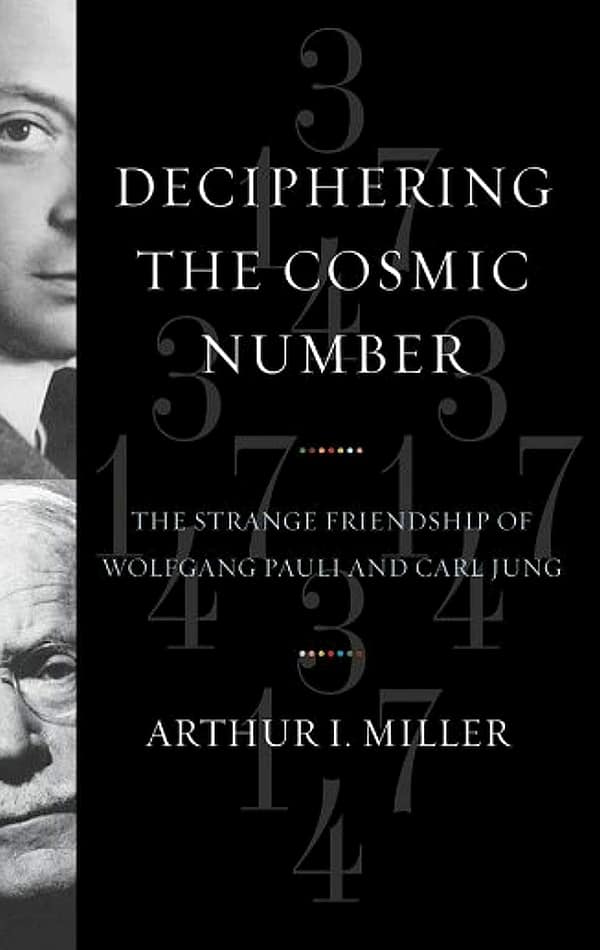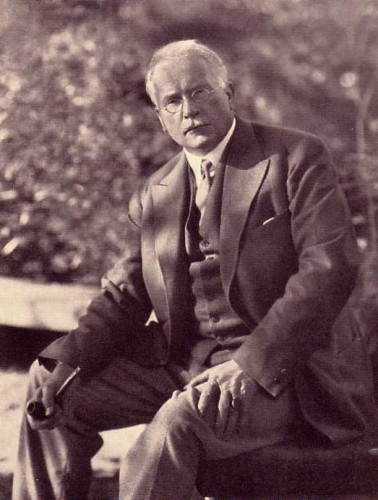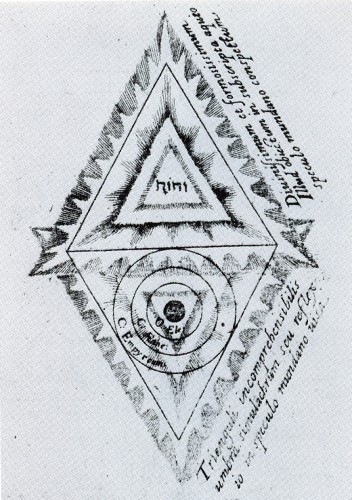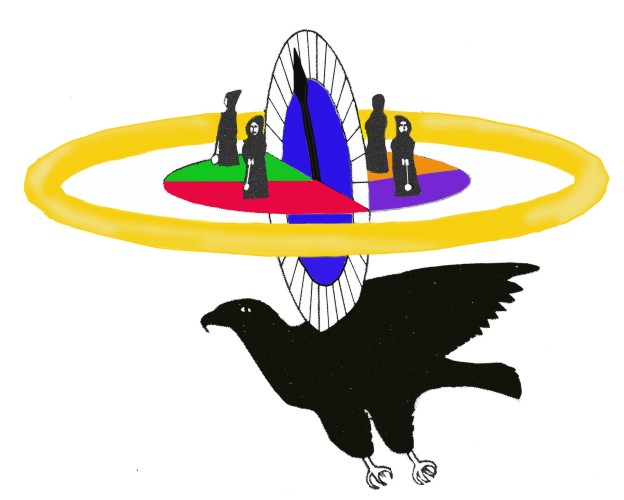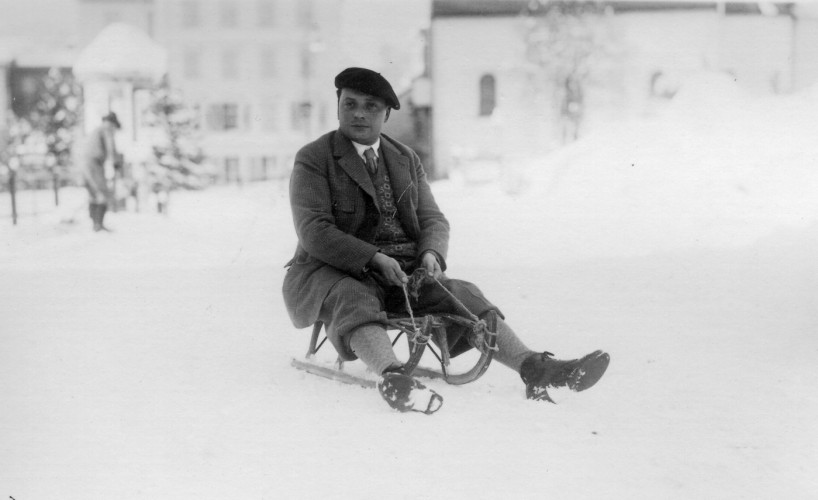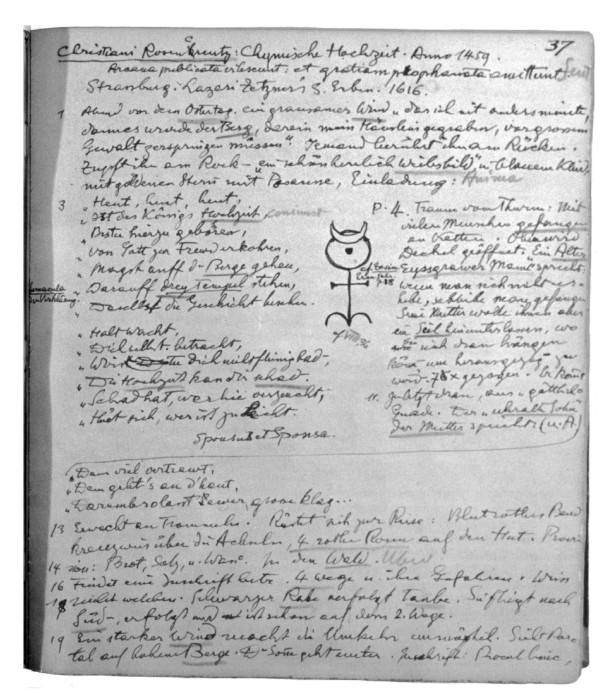“Arthur I. Miller is a master at capturing the intersections of creativity and intelligence. He did it with Einstein and Picasso, and now he does it with Pauli and Jung. Their shared obsession with the number 137 provides a window into their genius.”
Walter Isaacson, author of Einstein
From Deciphering the Cosmic Number
“When the hard-boiled rationalist…came to consult me for the first time, he was in such a state of panic that not only he but I myself felt the wind blowing over me from the lunatic asylum!“
Jung on Pauli
“[I contacted] Mr. Jung because of certain neurotic phenomena which are connected with the fact that it is easier for me to achieve academic success than successes with women. Since with Mr. Jung rather the contrary is the case, he appeared to me to be quite the appropriate man to treat me medically.”
Pauli on Jung
In Deciphering the Cosmic Number I explore how Carl Jung analysed the dream imagery of one of his most famous patients, the ground-breaking physicist Wolfgang Pauli. Pauli’s unconventional and wild life brought him to the brink of a mental breakdown. He obsessed over how he had made his greatest discovery, feeling that he had tapped into something beyond physics.
It’s the story of two mavericks – Pauli, a scientist who – unlike his peers – was fascinated by the inner reaches of his own psyche and not afraid to dabble in the occult; and Jung, the famous psychologist who nevertheless was sure that science held answers to some of the questions that tormented him. Both made enormous and lasting contributions to their fields. But in their many conversations over dinner and wine at Jung’s Gothic mansion on the shores of Lake Zurich, they went much further, striking sparks off each other as they explored the middle ground between their two subjects.
They deliberated at great length over whether there was a number that everything in the universe hinged on, that explained everything – a primal number that provided insight into the equations of the soul. Might it be three as in the Trinity? Or four as argued in alchemical texts? Could it be the weird number 137, which on the one hand described the DNA of light and on the other is the sum of the Hebrew letters of the word “Kabbalah”?
Deciphering the Cosmic Number is a tale of an extraordinary friendship between two equally brilliant yet very different men. Jung’s and Pauli’s was a truly unique meeting of the minds. It was, as Jung wrote, to lead both of them into “the no-man’s land between Physics and the Psychology of the Unconscious…the most fascinating yet the darkest hunting ground of our times.”
Radio interview
Radio interview first broadcast on 2nd May, 2009 – Arthur I Miller talking to Gene Heinemeyer about Deciphering the Cosmic Number.
In discussion on ‘Little Atoms’
Listen to Arthur I. Miller discussing 137: Jung, Pauli and the pursuit of a Scientific Obsession on Little Atoms.
First broadcast on 13th August, 2010.
Little Atoms is produced and presented by Neil Denny, Padraig Reidy, Richard Sanderson and Rebecca Watson, as well as regular Mystery Guest Presenters.
Gallery
Please click on thumbnails below to scroll through the gallery:
In discussion on ‘Light Worker’s Guide to the Galaxy’
Watch Arthur I. Miller in discussion on Nick Ashron’s show – Light Worker’s Guide to the Galaxy – about aspects of nature that go beyond science as we understand it today, such as consciousness. Focus is on how Carl Jung and Wolfgang Pauli saw these issues through the lens of alchemy, mysticism, religion and myth.
Reviews
Why two geniuses delved into the occult
In his latest book, Deciphering the Cosmic Number, historian of science Arthur I Miller investigates the bizarre friendship between quantum physics pioneer Wolfgang Pauli and famed psychoanalyst Carl Jung.
New Scientist, 24 April 2009. Interview with Amanda Gefter
Together, the two great thinkers delved into mysticism, numerology and alchemy in their quest to understand the universe and themselves. Miller tells New Scientist about his experience writing the book. […] Read full interview on line
Cosmic numbers: Pauli and Jung’s love of numerology
On the surface, Arthur I. Miller’s latest book is a joint biography of two great minds of the 20th century: quantum physics pioneer Wolfgang Pauli and psychoanalysis master Carl Jung. This two-in-one approach has served Miller well; his 2001 book Einstein, Picasso attracted wide acclaim. But whereas Einstein and Picasso never actually met, Pauli, we learn, met Jung on numerous occasions. They grew to be close friends, and Pauli became one of Jung’s regular clients […] Read full review on line
New Scientist, magazine issue 2705, 24 April 2009. Review by Dan Falk
Deciphering the cosmic number
[…] despite the lofty, and sometimes downright crazy, ideas covered by Jung and Pauli (even UFOs make an appearance), this book won’t give you headaches. Miller’s account of their adventures is captivating, succinct and accessible. You don’t need any previous knowledge of physics or psychology — or alchemy for that matter — to enjoy it. The two personalities are central to this story and Miller provides plenty of personal detail to keep you smiling, even in the face of some heavy physics, which Miller expertly condenses into digestible chunks accessible to novices. Miller’s explicit descriptions of Pauli’s dreams and their analysis by Jung paint a visceral picture of the two men’s approach not just to treating Pauli’s emotional troubles, but also to unravelling the archetypes that underly science. […] Read full review on linePlus magazine, June 2009. Review by Marianne Freiberger
La fisica, il diavolo e il numero di Dio
[…] Questo libro è la storia di Pauli, degli uomini che cambiarono la fisica, di Jung, della Germania in guerra, del pensiero moderno da Keplero ad Einstein, della psicologia dinamica. E del numero 137. Read full review on lineRepubblica.it – Bookowski Blog. Review by Dario Olivero of the Italian edition of Deciphering the Cosmic Number – L’equazione dell’anima – translated by C. Capararo and S. Galli, published by Rizzoli.
Deciphering the Cosmic Number: The Strange Friendship of Wolfgang Pauli and Carl Jung
[…]Arthur I. Miller, the distinguished historian of physics, has cleverly hit on the idea of using the relationship between the two men to give an interdisciplinary perspective on Pauli’s life. The book serves as the first popular biography of this outstanding scientist and is long overdue.
One of the virtues of Miller’s account is the accessibility of its science. He highlights Pauli’s most important contributions to physics, including his successful prediction of the neutrino (an elusive fundamental particle) and his discovery of the exclusion principle, essential to the modern understanding of atoms and stars.[…] Read full review on lineTimes Higher Education, 16 July 2009. Review by Graham Farmelo.
The odd couple: Carl Jung, Wolfgang Pauli and mystic numbers
A strange marriage of science and psychology
Soon after he arrived to take up a new post in Zurich in the early 1930s, exhausted and emerging from divorce and a breakdown, the physicist Wolfgang Pauli took the obvious course: he checked himself into the clinic of the local analytical psychologist Carl Jung for a course of therapy. So began one of the most extraordinary partnerships of the twentieth century. Over the following twenty-five years, the two men worked together, not just on Pauli’s emotional problems but on a quest to unify the worlds of science and human psychology. Arthur I. Miller is not the first to mine their extensive correspondence for insights into both men, but his accessible account should bring this odd couple to a wider readership. […] Read full review on line
The Times Literary Supplement, 2 September, 2009. Review by Georgina Ferry.
Dreams of a quantum pioneer
[…] The Pauli–Jung friendship is an ideal subject for Miller, who trained as a physicist but has had a long-time interest in the boundary between science and art, particularly in imagery and questions of creativity. He has explored these topics in previous works, including a joint study of Einstein and Picasso. In this book, he first introduces Pauli, then Jung before beginning to weave their story together. He focuses in particular on Jung’s analysis of Pauli’s dreams – several of which Jung later published along with their interpretation, but without identifying their source other than as “a distinguished scientist”. It makes for a fascinating and an unlikely story, one that Miller follows exceedingly well through its twists and turns. His style is both brisk and accessible, making the book exciting to read as well as informative.[…] Read full review on linePhysics World, 2 September 2009. Review by Gino Segrè.
The Shadow Realm: The unlikely friendship of Wolfgang Pauli and Carl Jung
[…] More than 20 years ago, Miller came across a book the two men had coauthored. He knew Jung to be a great explorer of mysticism and alchemy–subjects that the hard-nosed, rationalist physicists of the early 20th century shied away from. But here was a giant of physics joining in. “In the book, Pauli discusses the 17th-century astronomer and mystic Johannes Kepler, and he delves into alchemy and mysticism with great passion,” says Miller. “Who was the real Pauli?” […] Read full article on lineTechnology Review, November/December 2009. Meet the Author interview by Meg Mitchell Moore.
Creativity and intellect: when great minds meet
Writer and science historian Arthur I Miller talks about his interdisciplinary approach to the creative process, which underlies his recent book on Pauli and Jung. […] Read full interview on line
Do you think there is a sense beyond numbers? Do they have any special meaning? Are there some more powerful than others? Many great men throughout the centuries have exercised their minds to find answers to these questions. In his latest book, the distinguished historian of science Arthur I Miller (p17) investigates one of the possible responses in the unique blend of two extraordinary lives, those of Carl Jung and Wolfgang Pauli. […] Read full review on line
CERN Courier, 31 March 2010. Interview and book review by Beatrice Bressan

